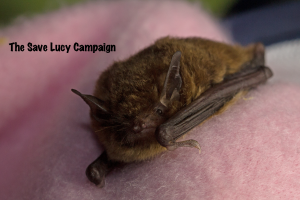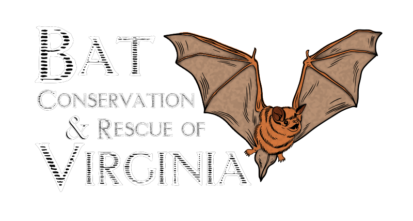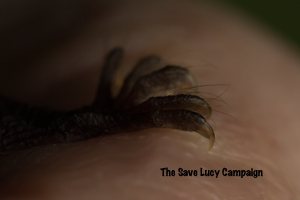Baturday News is a weekly blog written by Rachael, a high school student, bat advocate, and Save Lucy volunteer. Rachael’s interest in bats was sparked by the big brown bats that used the outside of her former home for a winter roost. Rachael has been writing the Baturday News for over three years.

Hi everyone! I hope you all had a good week. It has been an eventful one! We started the week off by celebrating Martin Luther King, Jr’s birthday. Then, on Friday, we said good-bye to President Obama and hello to President Trump. Friday was an especially eventful day for my family because it was also my dog’s anniversary. We celebrated 8 wonderful years with my dog by having a little party for her. She now knows the word “anniversary” and more importantly, she learned “anniversary cake”. And before you say that this doesn’t have anything to do with bats, it does. Just take a look at Ginger’s bat impression… 🙂

And now for the true bats…Since former President Obama was from Illinois, I thought I’d research bats from there. They have 12 bat species in the state. Some of them are the same bat species that we have in Virginia. One of the bats that they have that we don’t is the Southeastern Bat. [Much as we hate to burst our own blogger's bubble, we DO have Southeastern Myotis in VA--and we have pictures to prove it! --Ed.]
The Southeastern Bat has thick fur that is shorter than most fur found on other similar species. The fur has a dark base with a white tip [eh--not so much with the white tips, but dark base fur, yes! --Ed.]. The Southeastern Bat molts towards the end of summer, going from a lighter coat to a darker one. You can tell the Southeastern bat from other Myotis bats, by their really long toe hairs! 🙂 [Little browns also have long toe hairs, which makes species ID very difficult. --Ed.]
The Southeastern Bat lives in southeastern North Carolina, central Georgia, southern and western Alabama, western Tennessee and Arkansas, southeastern Oklahoma, eastern Texas, Florida, and along the Ohio River Valley in Kentucky, Indiana and Illinois [and Virginia!! --Ed.]. They live in caves, but will also live near people in attics, barns, bridges, and mines.
They forage over water at night, flying as low as 60 cm above the water. They eat midges, mosquitoes, small moths, small beetles and crane flies.
If you would like to learn more about the Southeastern Bat, you can read about it here.

